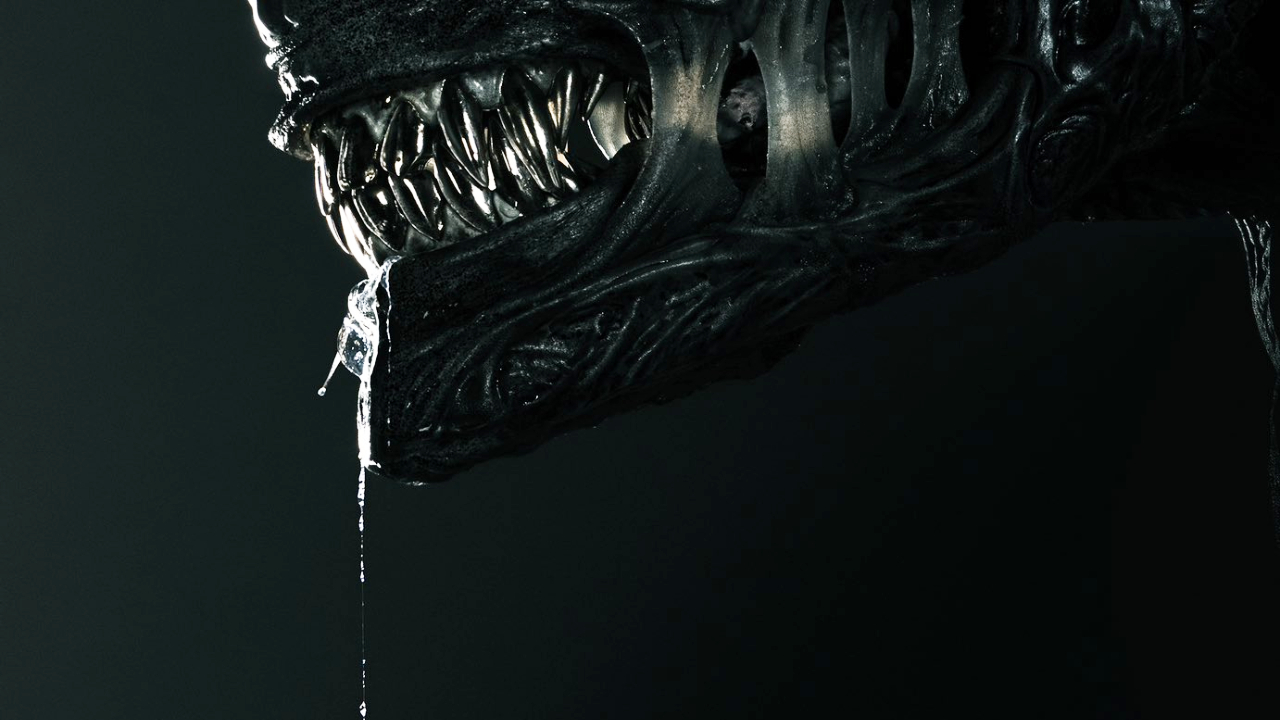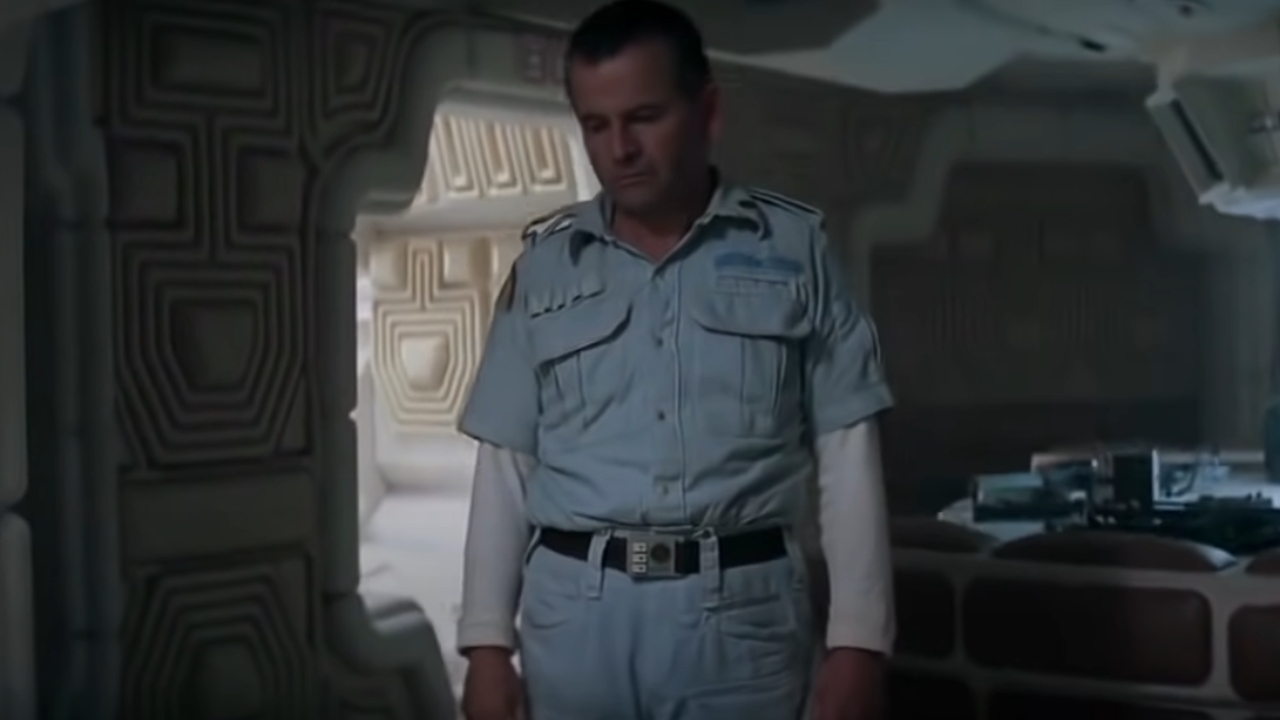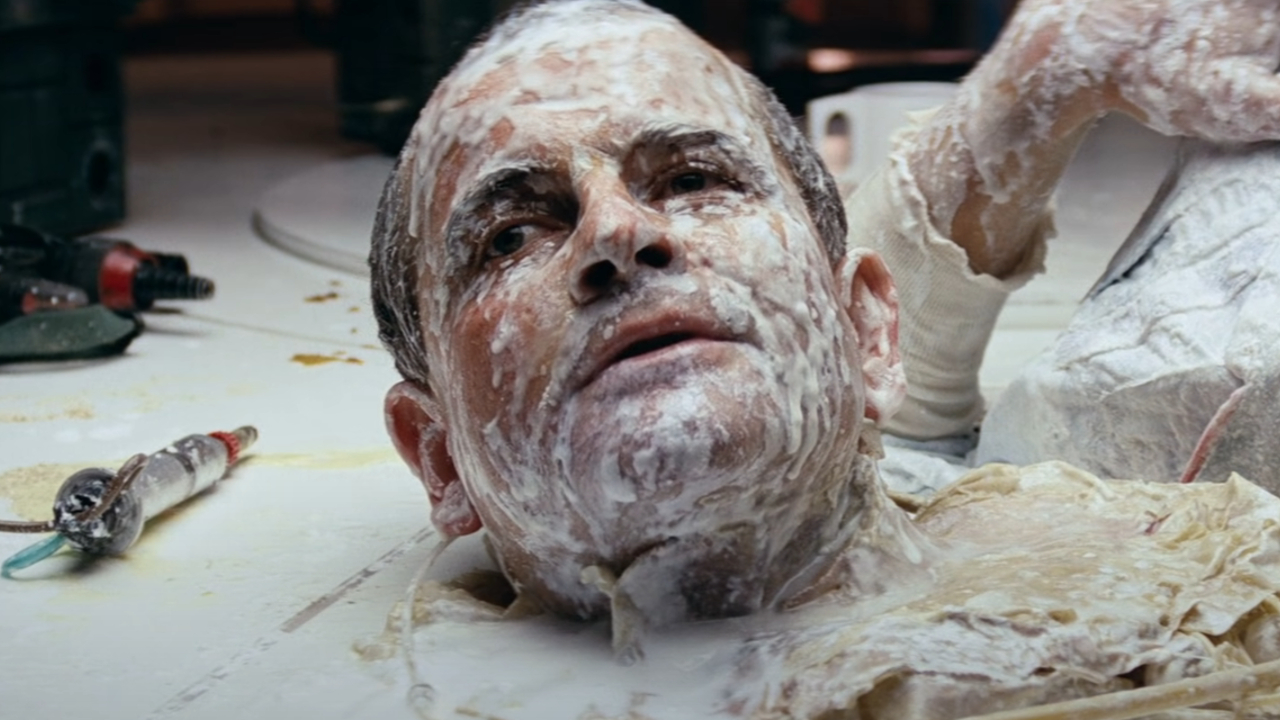Alien: Romulus’ Surprise Alien Callback Character Was A Last Minute Addition, And The Process That Brought Him To The Screen Is Pure Movie Magic
Filmmaking is a remarkable artistic craft, and this story is great evidence of that.
SPOILER WARNING: The following article contains minor spoilers for Alien: Romulus. If you have not yet seen the film, proceed at your own risk!
Director Fede Álvarez’s Alien: Romulus is in many ways a love letter to the entirety of the Alien franchise, but in reflecting upon the film, there is one particular callback that is particularly special: the appearance science officer Rook, who is meant to be the same model synthetic human as Ian Holm’s Ash from Ridley Scott’s Alien. Its inclusion is a result of the filmmakers hoping to create a stronger link between the new movie and the 1979 classic – but what you don’t know from just seeing him in action on the big screen is all of the work and hustle that went into his creation.
This past Saturday, Beyond Fest hosted a special Alien/Alien: Romulus double feature that was followed by a filmmaker Q&A panel, and it was during this conversation that animatronic puppeteer Shane Mahan from Legacy Effects detailed the full story behind the creation of Rook. To begin, he explained that there was a thought to have Rook be the same model as Ash earlier in production, but it was ultimately a late change.

Alien: Romulus Originally Had A Totally Different Science Officer Character That Got Replaced Late In Production
Had certain calls and agreements not been made, the damaged science officer discovered aboard the decommissioned research station Renaissance in Alien: Romulus would have been a totally new character (note: Rook is technically a new character, as he is different than Ash, but you get what I mean). Shane Mahan said that the film was originally going to cast the part with an actress in makeup – which meant that he wouldn’t have been a part of that aspect of the production:
That was an idea that came late in the production schedule. It was a great idea. The original character was a female science officer, and it would've been an actress in makeup and sort of in a half suit or a half creation under a set, but it would not have been an animatronic creation.
Everything changed, however, when Mahan and Legacy Effects’ Lindsay MacGowan were summoned by Fede Álvarez for an urgent Zoom call. They fretted that the filmmaker was reaching out to tell them that they were being axed from the production, but they were instead presented with an interesting challenge: resurrecting Ian Holm as an animatronic:
It was a very interesting day, because Lindsay [MacGowan] and I got a call to an emergency Zoom call with Fede [Álvarez] and it was like a Sunday or something and it was super important, and we're like, 'Oh, I think we're gonna get fired.' And he goes, 'Ok, we have this idea, and we want Rook to be a model that looks just like Ash.' And I was like, 'That's awesome.' And then I thought, 'That's terrifying.'
A significant part of what made the prospect so terrifying was the fact that the production lacked proper reference materials that were necessary for the work. Ian Holm passed away in June 2020, so the filmmakers couldn’t work with him personally, and there weren’t any existing physical molds or digital scans.
Fans of Alien will remember that there was a model of Ian Holm’s head that was made for the 1979 movie, but even that wasn’t available for use:
Your Daily Blend of Entertainment News
Ian [Holm] was 43, I think in [1979]. And there was no record of a mold of his face, even though they made one for when Yaphet [Kotto] bashes his head off with the fire extinguisher. Nothing existed. There was no digital scan back then. There was nothing. So what we had to do was figure out how are we going to resurrect a man who is deceased from 1979 and make it believable and make it a character that can act with these wonderful actors in a scene multiple times?

With Visual Effects As A 'Bridge,' Legacy Effects Built Rook As A Complex Animatronic
Legacy Effects didn’t have the reference material typically used in recreating a person as an animatronic, but Shane Mahan and his fellow filmmakers did have photography to work with, and he explained how the science officer’s visage was made:
You just rise to the challenge and you say, 'Ok, we're gonna take it as far as we can with an animatronic. We will need the help of visual effects here and there to bridge it.' And what it ended up being was a portrait sculpture from photographs that was then scanned and then put into the computer and kind of worked even a little further – a silicone face that is then given extreme animatronic mechanisms underneath.
Those animatronic mechanisms underneath the silicone face give the puppeteers the ability to both augment expressed emotion and sync the mouth with dialogue – which was another part of the process.
Alien: Romulus cast actor Daniel Betts to impersonate Ian Holm and record Rook’s dialogue, and then that audio was programmed in coordination with facial movement:
They found an actor that they did all the lines with, and then we pre-programmed all of the lines that were on a track – that was a recorded system that could play back. So it would do it every time the same way in terms of the face movement.
Shane Mahan added that the head and body of Rook were animatronics that he operated from beneath the desk on which the android is placed toward the middle of the film. If you watch Alien: Romulus and note that the character’s right hand looks particularly human, however, there is a specific reason: it’s the real hand of one of the movie’s puppeteers:
The left hand was completely eaten away and that was animatronic. The torso is all eaten away, and it's lit. The right hand is my friend Chris Swift's hand underneath next to me, and I'm the idiot with my hand up inside his head moving his head. So we're crammed underneath the desk. So we had to work with the set construction to kind of hide us inside there. And so we're a combination of sophisticated animatronics and old school hand puppetry plus a real hand. So the real hand really helps fool you with touching keys and grabbing things.

Ian Holm’s Wife Was Initially Hesitant To Give The Alien: Romulus Production Permission To Use Her Late Husband’s Likeness, But She Ultimately Agreed
After describing the effort and technical aspects of what it took to bring Rook to life in Alien: Romulus, Mahan also explained why it was that the idea didn’t get the green light when Legacy Effects’ work on the blockbuster began. In order to use Ian Holm’s likeness, the production needed to get permission from the actor’s family, and the request didn’t procure an instant “Yes.”
According to the special effects artist, there were what he suggested were understandable concerns about the use of his image. Ongoing talks resulted in a delay to work on the animatronic, but Mahan expressed great pride in what was accomplished:
It was pretty scary because we just didn't have a lot of time to do it because his wife didn't want to agree to it for a long time. And rightfully so: she didn't know if it was gonna be making fun of him or something. So we lost a couple of months, but ultimately I'm very proud of it because I think it works pretty well. I don't think anyone realizes how difficult that was to pull off.
Following critical acclaim upon its release and its successful theatrical release this past August, Alien: Romulus is now available for digital rental and purchase via outlets including Prime Video, Fandango At Home, Google Play, and Apple. It would certainly be a fitting cinematic treat to enjoy during spooky season – and if you’re curious about other new releases, you can check out our Upcoming Horror Movies guide.

Eric Eisenberg is the Assistant Managing Editor at CinemaBlend. After graduating Boston University and earning a bachelor’s degree in journalism, he took a part-time job as a staff writer for CinemaBlend, and after six months was offered the opportunity to move to Los Angeles and take on a newly created West Coast Editor position. Over a decade later, he's continuing to advance his interests and expertise. In addition to conducting filmmaker interviews and contributing to the news and feature content of the site, Eric also oversees the Movie Reviews section, writes the the weekend box office report (published Sundays), and is the site's resident Stephen King expert. He has two King-related columns.
